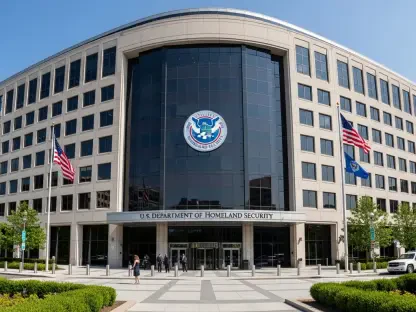In the heart of California’s Central Valley, Stanislaus County, based in Modesto, has recently adopted a $1.89 billion budget for the fiscal year starting July 1, following a close 4-1 vote by the Board of Supervisors. This financial blueprint, reliant on $46 million from dwindling reserves, has sparked intense debate among county leaders and stakeholders, especially with economic uncertainties looming and revenues flattening. The budget’s implications extend far beyond numbers on a page. This roundup gathers diverse opinions and insights from county officials, financial experts, and community advocates to explore the risks, priorities, and future considerations surrounding this pivotal decision. The goal is to provide a comprehensive view of the fiscal challenges and differing approaches to balancing immediate needs with long-term stability.
Unpacking the Budget: Diverse Voices on Financial Strategy
Reserves as a Lifeline: Necessary or Risky?
The decision to tap into $46 million from reserves to balance the $1.89 billion budget has elicited mixed reactions. County financial officers have expressed concern over the declining reserve levels, which have dropped significantly in recent years, with projections estimating a further fall to $168 million. They argue that while this move addresses current shortfalls, it heightens vulnerability to unexpected economic downturns, especially given stagnant revenue trends mirroring broader market stagnation.
Community fiscal watchdogs, on the other hand, view this reliance as a red flag. Many caution that dipping into reserves without a clear replenishment plan sets a dangerous precedent, potentially leaving the county unprepared for emergencies or sudden funding cuts from state or federal levels. Their stance emphasizes the need for alternative revenue streams or tighter spending controls to mitigate such risks.
A contrasting perspective comes from some administrative leaders who defend the strategy as a pragmatic, short-term solution. They highlight that unforeseen savings in expenditures or higher-than-expected revenues could offset the reserve drawdown. While acknowledging the gamble, these voices stress that immediate community needs, such as public safety and infrastructure, justify the calculated risk in the current climate.
Spending Priorities: Where Should the Money Go?
Diverging philosophies on budget allocation have surfaced among county supervisors, revealing a deeper divide on governance. One supervisor, representing a district with strong community service demands, dissented against the budget, criticizing what they see as a “top-heavy” administrative structure. This perspective pushes for a bottom-up model that funnels resources directly to frontline staff and essential programs benefiting residents most in need.
In response, other board members argue that maintaining a robust administrative framework ensures long-term operational efficiency. They contend that cutting upper-level positions or redirecting funds could disrupt critical oversight and planning functions, ultimately harming service delivery. This viewpoint prioritizes systemic stability over immediate reallocations, sparking a heated debate on how best to serve taxpayer interests.
Local advocacy groups weigh in with a focus on transparency and impact. Many urge the county to reassess spending through public input, suggesting that community-driven priorities—such as mental health services or road repairs—should take precedence over internal bureaucratic growth. Their input underscores a broader call for accountability in how limited funds are distributed across Stanislaus County’s diverse needs.
Economic Uncertainties: Local Impacts of Broader Trends
Concerns about external funding pressures have also shaped the budget discourse. Supervisors representing areas like Turlock, Hughson, and Denair have voiced unease over declining state and federal allocations to local governments. They warn that such reductions, combined with stagnant local revenues, could strain the county’s ability to maintain current service levels without further reserve depletion.
Economic analysts observing regional trends in the Central Valley add another layer to the conversation. They note that national economic slowdowns often hit agricultural and rural counties like Stanislaus hardest, impacting tax bases and job growth. Their analysis suggests that proactive measures, such as diversifying income sources or lobbying for more state support, could buffer against these looming threats.
Resident associations in smaller communities within the county express frustration over the trickle-down effects of these fiscal challenges. Many fear that budget constraints will disproportionately affect rural areas, where infrastructure and public services are already stretched thin. This grassroots perspective calls for equitable distribution of resources to prevent widening disparities across the region.
Balancing Act: Short-Term Needs Versus Long-Term Security
The tension between addressing urgent community demands and preserving financial health for the future remains a central theme. Some county leaders advocate for prioritizing direct services—think expanded health programs or staffing for emergency response—arguing that visible, immediate benefits build public trust and address pressing inequities in access to resources.
Conversely, others with a more conservative fiscal outlook emphasize the importance of safeguarding reserves as a buffer against potential crises. Drawing from historical downturns, they caution that overspending now could lead to drastic cuts later, especially if economic conditions worsen. This camp pushes for a disciplined approach, even if it means delaying certain community projects.
Nonprofit organizations focused on long-term county planning offer a middle ground. They propose phased investments in critical areas while simultaneously building reserve restoration plans through incremental savings or grant pursuits. Their balanced viewpoint highlights the possibility of meeting today’s needs without entirely sacrificing tomorrow’s security, urging collaborative dialogue to refine the strategy.
Key Takeaways from the Fiscal Debate
Reflecting on the myriad opinions surrounding Stanislaus County’s budget adoption, several critical insights emerged. The heavy reliance on reserves divided stakeholders, with some seeing it as a necessary evil and others as a risky overreach. Differing priorities—whether to bolster frontline services or maintain administrative capacity—revealed fundamental disagreements on governance. Economic uncertainties at local, state, and national levels further complicated the outlook, prompting calls for innovative revenue solutions and cautious spending.
Looking back, the discussions underscored a shared recognition of the county’s stable yet precarious financial position. The debates over the $1.89 billion budget illuminated the complexity of aligning diverse community needs with shrinking resources. Moving forward, actionable steps include exploring public-private partnerships to boost revenue, implementing stricter expenditure audits to curb waste, and fostering regular town hall meetings to ensure resident voices shape future budgets. These strategies, born from the varied perspectives shared, offer a roadmap for navigating fiscal challenges with both pragmatism and foresight.









